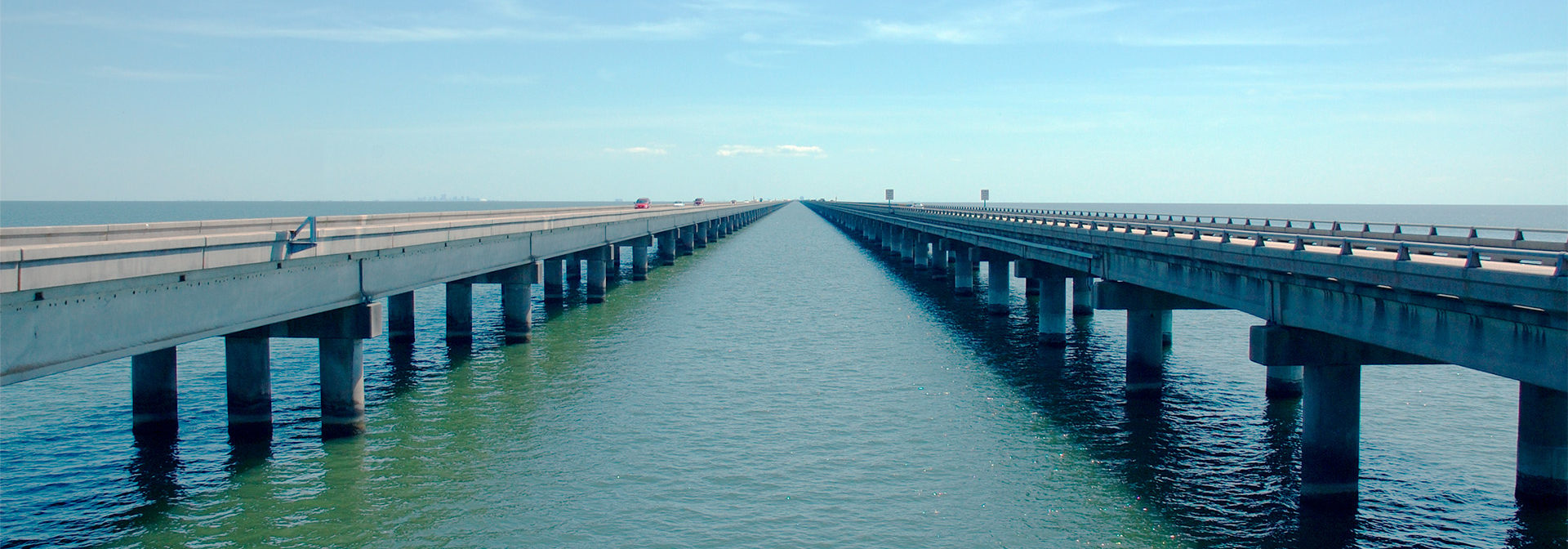
Lake Pontchartrain Causeway Bridge
Video surveillance for the world’s longest bridge.
A bridge system of this magnitude is quite difficult to monitor, but an installed video surveillance system is helping to change that.
The Greater New Orleans Expressway Commission (GNOEC) decided to design an IP-based network to monitor the traffic on, below, and around the bridge. In addition to monitoring the bridge, there are various water approaches and toll booths that require monitoring. The system also includes DVRs which save all recorded video streams for a period of 48 hours on a first-in, first-out basis.
The Lake Pontchartrain Causeway is a causeway composed of two parallel bridges crossing Lake Pontchartrain in southern Louisiana, United States. The longer of the two bridges is 38.35 km (23.83 miles) long. The southern terminus of the causeway is in Metairie, Louisiana, a suburb of New Orleans. The northern terminus is at Mandeville, Louisiana. The bridges were built between 1956 and 1969, and the Causeway Bridge is the longest (continuous) bridge over water. The bridges are supported by 9500 concrete pilings. The two bridges feature bascule spans over the navigation channel 13 km (8 miles) south of the north shore.
We are looking forward to working with Teleste on yet another project. Not only do they provide excellent products, their technical support is outstanding. Integration with other standards-based platforms has been as simple and worry-free as we’ve seen.
– The prime integrator on the Causeway project.
Customer need
- To monitor traffic patterns, and quickly locate and respond to problems.
- To provide a system that watches over the Lake Pontchartrain Causeway in a unique area that would otherwise be impossible to sufficiently monitor.
- To locate and respond to problems such as accidents, broken-down cars, and debris at any point along the bridge.
- To track criminals on the run.
- To provide efficient delivery of evidence.
Solution to customer’s need
The surveillance system features 29 video cameras mounted at various points along the bridge, with some positioned at the crossovers, on the drawbridge, and below the spans. The cameras have pan, tilt, and zoom capabilities, and can see for distances up to 1½ miles. With cameras placed every three miles, the system provides a bird’s eye view of the entire length of the 24-mile bridge.
The network is comprised of 26 Teleste IP video encoders which facilitate video transmission as well as PTZ control of cameras located on and around the bridge. 13 units contain both an encoder and an integrated switch in the same chassis; this facilitates Ethernet connectivity to the network’s edge and allows for a scalable and fault-tolerant design. In addition to monitoring the bridge, there are various water approaches and toll booths that require monitoring; additional Teleste encoders and switches are placed in these locations. The core of the network is built using a Gibabit Ethernet backbone to the primary and secondary monitoring stations.
The causeway video surveillance system is monitored on two flatscreen televisions at the toll plaza in Metairie. A separate pair of monitors also allows for viewing traffic at a 360-degree angle. During morning and afternoon rush hours, two employees keep watch over the camera footage, while a single employee mans the helm for the remainder of the day.
DVRs save all recorded video streams for a period of 48 hours on a first-in, first-out basis. This will allow GNOEC to review incidents which have occurred and determine if they will need to be moved to permanent storage.